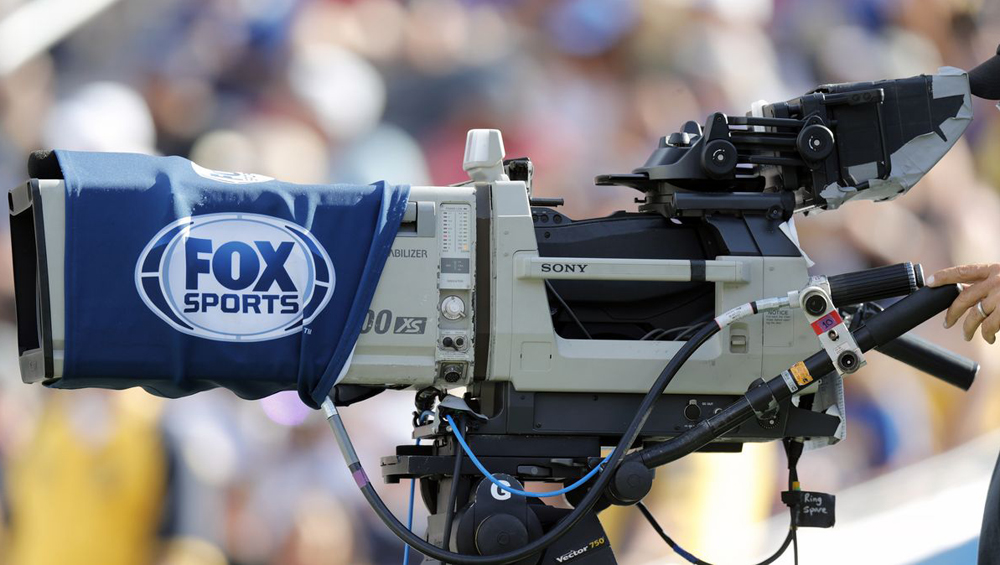
TVN Tech | Pandemic Halts HDR, UHD Momentum

The expansion of live sports production in the 1080-line progressive with High Dynamic Range (1080p HDR) and 4K UHD formats that occurred in 2019 stalled last year in the U.S. due to the COVID-19 pandemic, as broadcasters had to overcome serious technical and logistical hurdles just to provide conventional 720p and 1080i HD coverage.
With a new Major League Baseball season starting in three weeks, networks, mobile truck companies and technology vendors say the pandemic will continue to impact HDR and UHD production through 2021 due to equipment availability, the complexity of new remote workflows and financial constraints.

Hugo Gaggioni
Hugo Gaggioni, CTO of Media Solutions for Sony Electronics, says that 4K HDR production is commonplace today in Asia, where there is ample UHD distribution to consumers, and that it also has good penetration in parts of Europe as well as Canada. But most of Sony’s U.S. broadcast customers are only planning to produce live sports in 720p and 1080i through the rest of 2021, with the notable exception of NBC, which is preparing to produce its Tokyo Olympics coverage in 1080p HDR.
“The No. 1 concern from a technology perspective is to create more efficiencies, more safeguards and more advanced workflows to avoid multiple people in the trucks,” Gaggioni says. “And remote integration is now the No. 1 technology priority, and the quality of the signal has taken a lower interest. I don’t think it has disappeared, but it’s just that everybody is trying to execute more efficient workflows using IP and remote integration.”
Grass Valley Technology Fellow Chuck Meyer says there was significant momentum behind 1080p HDR after the 2019 baseball and football seasons that was lost due to COVID-19.

Chuck Meyer
“I think 2020 could have been a pretty big pivot year for both HDR and potentially 4K, but these things all tend to get pulled by live sports,” he says. “And when you don’t have live sports, people aren’t so interested in pushing the new technology.”
Future Prospects
Meyer still thinks the prospects look bright for 1080p in the future, however, due to several practical advantages. 1080p HDR at 60 frames per second equates to 3 Gbps in uncompressed form, which means it can be handled by older trucks and broadcast plants with legacy 3-gigabit HD-SDI routing infrastructures. 1080p HDR is supported by much of the existing production chain, including replay servers, with a few minor upgrades.
And on the transmission end for OTT or ATSC 3.0, it can be delivered at a much lower data rate, requiring around 8 Mbps with HEVC encoding compared to 15 Mbps or more for 4K.
1080p HDR is also easily upconverted to 4K HDR for distribution on pay TV or streaming platforms, or downconverted to standard dynamic range (SDR) to support legacy HD broadcasts. That is exactly what Fox did for its coverage of Thursday Night Football and the MLB post-season in 2019, as well as Super Bowl LIV in February 2020.
Fox had to pull back on its UHD plans in 2020 because of COVID-19 lockdown rules imposed by Major League Baseball, which meant the same production trucks stayed in place at stadiums through last summer. With a limited number of fully 1080p HDR-capable trucks available, Fox stuck to 720p productions and only did 1080p HDR for its postseason MLB coverage last fall.

Brad Cheney
“Really, in the spring and summer the challenge for us was availability of resources,” says Brad Cheney, VP of field operations and engineering for Fox Sports.
Football was a different story, as Fox had more control over its production resources. It produced two college football games in 1080p HDR each week, along with NFL games on Thursday night and some NFL playoff games.
“Once we had control back again with football, we turned things back on,” Cheney says.
Limitations Continue
Fox has continued its 1080p HDR productions this winter with college basketball coverage, which wraps this weekend with the Big 10 and Big East tournaments. Coverage of those games will be upconverted to 4K UHD for distribution by various pay TV platforms including DirecTV, Comcast and Verizon, as well as streaming platforms like FuboTV and Fox’s own app.
As for baseball this season, Cheney expects to be dealing with many of the same access restrictions. That means Fox will likely rely on 720p for the bulk of its coverage with a few opportunities for some 1080p HDR production, including the MLB All-Star Game in July and a couple of regular season games.
“We’re really limited by what the schedule is,” Cheney says. “If the mobile units are there [at a stadium] and locked down, there’s nothing we can do.”

Philip Garvin
In that vein, Mobile TV Group didn’t handle any HDR or UHD productions last summer or fall, says CEO Philip Garvin. But things got back to normal for the truck vendor starting in January. It is now doing 20 to 30 NBA games in 4K HDR for NBA TV that are broadcast on DirecTV’s dedicated 4K channel, as well as a number of 1080p HDR productions for Fox that get upconverted to UHD.
The amount of HDR and 4K HDR work is now comparable to 2019, Garvin says, but still represents less than 5% of the company’s overall business.
Game Creek Video, which handles a lot of Fox’s football and basketball coverage, is doing about the same amount of UHD and HDR in 2021 as in previous years, says president and owner Pat Sullivan, perhaps with a few reductions. Game Creek will be supporting 4K HDR streaming coverage at The Masters golf tournament next month for the famous Amen Corner of holes 11, 12 and 13 at Augusta National.

Pat Sullivan
“I don’t think 4K HDR, or 1080p HDR in particular, is going to go away,” Sullivan says. “Over time, there will be a bigger push to adopt 1080p HDR, and that will become more and more the norm rather than the exception.”
A Need To See The Difference
Doing a 4K HDR production costs about 20%-25% more, according to Garvin. As such, he expects 4K HDR sports will remain a specialty item for some time with limited distribution. Garvin worked with Mark Cuban to help found HDNet in the early 2000s and remembers that the worst thing for the adoption of HD was people seeing it in “non-optimal circumstances.” He says that’s even more true for 4K.
“A lot of people have seen UHD and they don’t see a difference,” Garvin says. “If you’re going to do UHD, you’ve got to do it well at every step of the way. You’ve got to do the production well, you’ve got to do the backhaul properly and then you have to do delivery to the home at enough bandwidth. If you cut any of those corners, people will say I don’t see the point, it’s not better.”
Sony’s Gaggioni agrees, noting that in Asia broadcasters are delivering 4K to the home at high bit rates — 30 Mbps in Korea and 40 Mbps in Japan — and thus achieving excellent picture quality. He doesn’t think that live 4K sports can be delivered at good quality in 15 to 20 Mbps, as some U.S. broadcasters have discussed doing with ATSC 3.0. And he doesn’t expect that U.S. cable operators will want to deliver 4K at 40 Mbps.
“The other way to think about it is I’m going to do everything in 1080p, absolutely pristine, and go down to say 15 or 16 Mbps, using some fancy HEVC compression,” Gaggioni says. “The quality is fantastic, you get it to the distribution center and let them distribute 1080p to the homes and let the TV set at the house, or your set-top box, do the final conversion.”
HDR’s Ongoing Challenges

Prinyar Boon
Just doing HDR well, whether in 1080p or 4K, has its own complexities, says Prinyar Boon, product manager for test and measurement vendor Phabrix. Boon has been working on HDR production since 2014, when he was a systems architect with Dolby. He has helped support BT Sports’ 4K HDR production of English Premiere League soccer, delivered via streaming and OTT apps, over the past 15 months.
Boon says some of the big technical challenges with HDR, including upgrading wireless cameras and replay systems from 8-bit to 10-bit color, have been figured out. And camera shaders, who usually have to deal with a mix of HDR and SDR sources through a four-hour soccer game and make them all look good, have learned how to identify “the wrong kind of weird” in a picture and fix it.
If the Olympics goes off as scheduled this summer, Boon says, it should prove that the HDR workflow is mature. And the training that production crews at the Games will receive should help educate the broader industry on working in HDR and hopefully create some common practices.
“This is more like photography and a lot less like television,” Boon says. “That is a big conceptual change.”


































Comments (0)